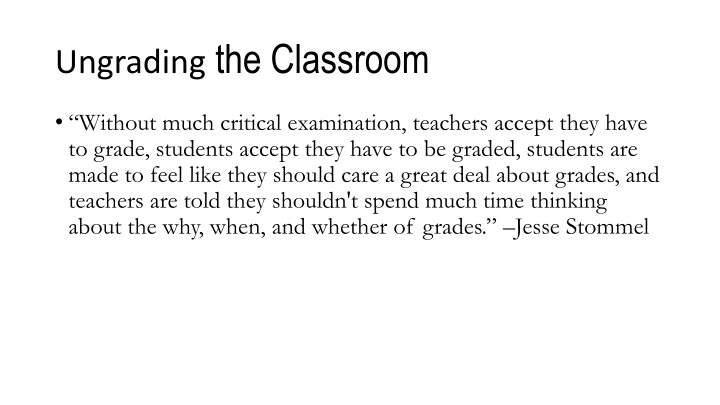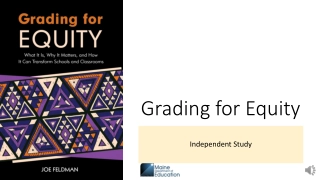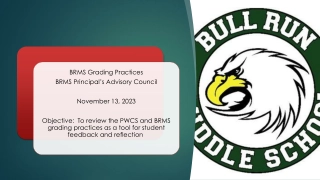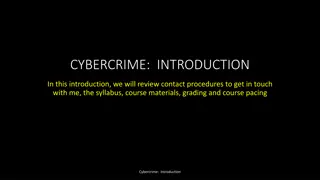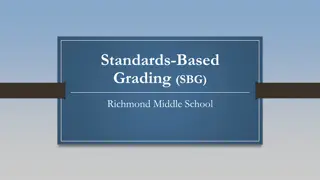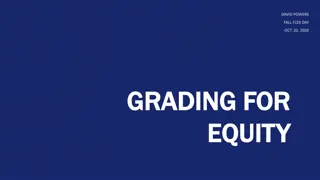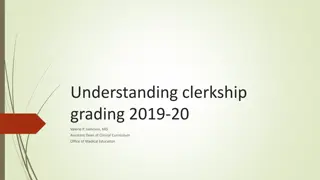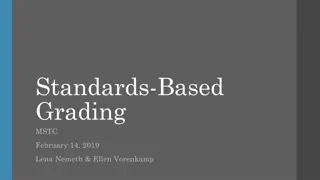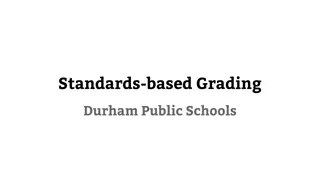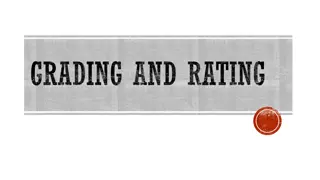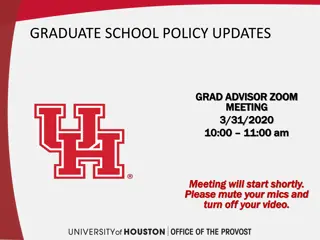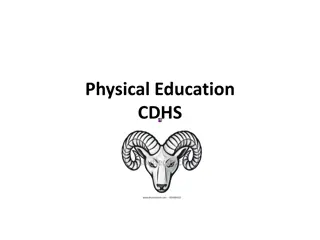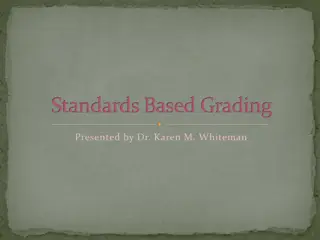Ungrading: Challenging the Traditional Grading System
Ungrading challenges the traditional deficit model of education, focusing on individual student growth rather than standardized performance. It aims to foster intrinsic motivation and holistic self-evaluation, encouraging students to reflect on their goals and interests.
Download Presentation

Please find below an Image/Link to download the presentation.
The content on the website is provided AS IS for your information and personal use only. It may not be sold, licensed, or shared on other websites without obtaining consent from the author.If you encounter any issues during the download, it is possible that the publisher has removed the file from their server.
You are allowed to download the files provided on this website for personal or commercial use, subject to the condition that they are used lawfully. All files are the property of their respective owners.
The content on the website is provided AS IS for your information and personal use only. It may not be sold, licensed, or shared on other websites without obtaining consent from the author.
E N D
Presentation Transcript
Ungrading the Classroom Without much critical examination, teachers accept they have to grade, students accept they have to be graded, students are made to feel like they should care a great deal about grades, and teachers are told they shouldn't spend much time thinking about the why, when, and whether of grades. Jesse Stommel
What does ungrading try to do? Ungrading challenges what educational theorist Cathy Davidson calls the deficit model of education. This model assumes that the purpose of education is for students to demonstrate to their evaluators (i.e. their professors) that they have either effectively or ineffectively performed a skill or set of skills. Ungrading shifts the focus of evaluation from a logic of standardized performance to a logic of individual student growth.
Goals One of the primary goals of ungrading is to encourage and foster intrinsic over extrinsic motivation. Instead of the instructor acting as an external judge who rewards or punishes student success, the instructor encourages the student to reflect on their own goals and interests and to then self-evaluate accordingly.
Do Rubrics Actually Decenter Grades? Student generated rubrics bring students in on the assessment process. They foster a more democratic environment wherein assessment is called attention to rather than treated as assumed and simply given. Yet even if students generate their own rubrics, the logic of grades and grading systems still persists. In this case, have we not merely re-centered grades in a different way?
From Grades to Holistic Self-Evaluation Holistic self-evaluation that is, self-evaluation without the use of rubrics or any kind of quantitative measurement tasks students with generating a narrative about themselves. Who are they? What are their goals? How does this class fit in with these goals? How might these goals undergo dynamic change in the course of a given semester or during one s college career? What must they do in order to get closer to achieving said goals?
